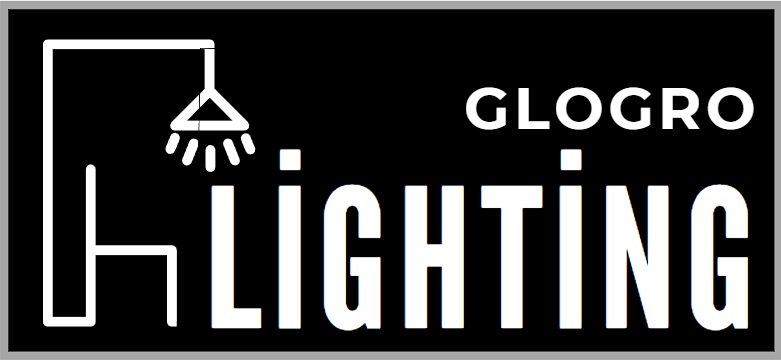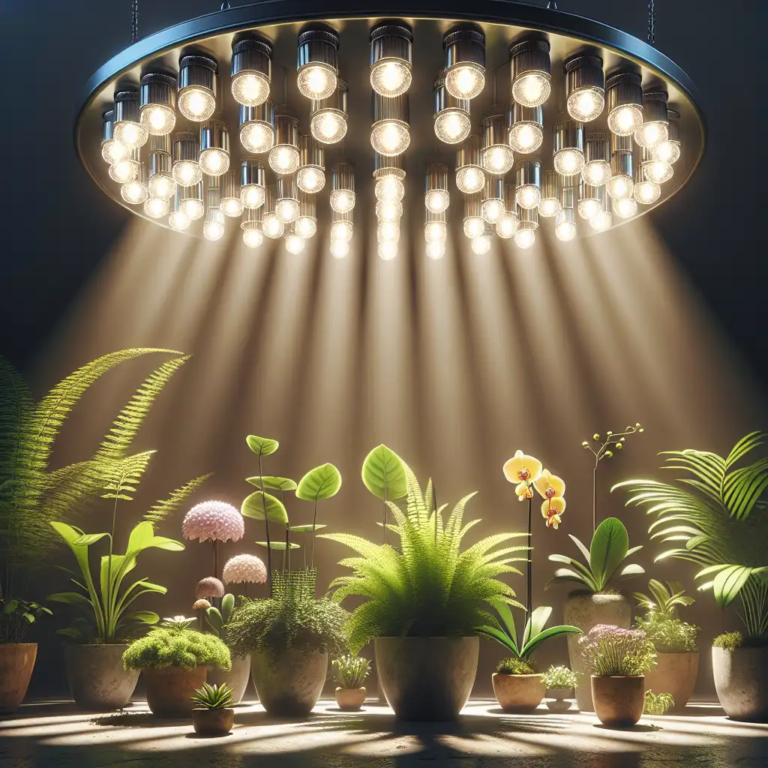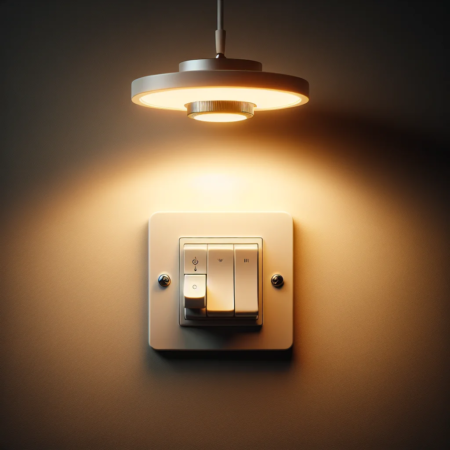Contents
Factors Affecting Plant Growth with Ceiling Lights
High light intensity is essential for promoting robust plant growth, with natural sunlight providing the highest intensity. Ceiling lights can serve as a suitable alternative for indoor plants, but it’s important to consider the specific light intensity requirements of different plant species. LED grow lights emerge as the most effective option due to their high light intensity, energy efficiency, minimal heat emission, and spectrum flexibility, ensuring optimal conditions for plant development.
Light intensity and its impact on plant growth
High light intensity is essential for promoting robust plant growth, as it fuels the process of photosynthesis. Natural sunlight provides the highest intensity of light, but for indoor plants, ceiling lights can serve as a suitable alternative.
However, it’s important to consider the specific light intensity requirements of different plant species. For instance, high-light plants such as succulents and cacti require more intense light compared to low-light plants like ferns and peace lilies.
Therefore, it’s crucial to position ceiling lights at optimal distances from the plants to ensure they receive adequate light without causing light burn.
To gauge the light intensity, you can utilize a light meter to measure the foot-candles or lux levels at various plant heights. This data helps in determining if the plants are receiving suitable light intensity for their growth.
Furthermore, adjusting the height and angle of the ceiling lights can aid in achieving the desired light intensity for optimal plant development. Different light spectrums, such as blue light for vegetative growth and red light for flowering, can also influence the overall impact of light intensity on plant growth under ceiling lights.
Different types of ceiling lights and their effectiveness for plants
When considering the effectiveness of ceiling lights for plant growth, it’s essential to weigh the pros and cons of various lighting options. Traditional incandescent lights emit a low light intensity and generate significant heat, which may not be suitable for indoor plants.
On the other hand, fluorescent lights, particularly T5 or T8 fixtures, offer a more energy-efficient option with better light output, making them a favorable choice for promoting plant growth.
However, the most efficient and effective lighting solution for indoor plants is LED grow lights. LED lights provide high light intensity, low energy consumption, and a spectrum optimized for plant growth.
The full spectrum LED bulbs are a versatile option as they cater to the distinct light requirements of plants at different growth stages. Additionally, LED lights emit minimal heat, reducing the risk of overheating the plants and creating a stable growing environment.
To showcase the effectiveness of different ceiling lights, let’s examine a comprehensive comparison in the table below:
| Ceiling Light Type | Light Intensity | Energy Efficiency | Heat Emission | Spectrum Flexibility |
|---|---|---|---|---|
| Incandescent | Low | Low | High | Limited |
| Fluorescent (T5/T8) | Moderate | High | Moderate | Moderate |
| LED Grow Lights | High | Very High | Minimal | High |
While various ceiling lights contribute to indoor plant growth, LED grow lights emerge as the most effective option due to their high light intensity, energy efficiency, minimal heat emission, and spectrum flexibility, ensuring optimal conditions for plant development.
Do Ceiling Lights Help Plants Thrive?
Ceiling lights can indeed help plants thrive by providing the essential light spectrum required for their growth. LED lights are the most suitable choice for indoor plant growth, as they offer a full spectrum of light, including both blue and red wavelengths that are crucial for stimulating vegetative, flowering, and overall structural growth in plants.
Exploring the effectiveness of ceiling lights for plant growth
When exploring the effectiveness of ceiling lights for plant growth, it is important to consider the specific light spectrum provided by the lights. LED lights are known for mimicking natural sunlight and can effectively support plant growth by promoting photosynthesis. It’s crucial to place the lights at an optimal distance from the plants to ensure even light distribution without causing heat damage or stress to the plants.
LED grow lights play a significant role in providing the necessary light spectrum that facilitates plant growth, ensuring that the plants receive the ideal balance of blue and red wavelengths during their different growth stages. By understanding the light spectrum requirements of plants and choosing the appropriate ceiling lights, it is possible to create an indoor environment that effectively supports and enhances plant growth.
Factors to consider when using ceiling lights for plant care
Several factors should be taken into account when using ceiling lights for plant care. It’s crucial to choose the right LED grow lights that provide both blue and red wavelengths, as these are essential for stimulating different growth characteristics in plants. Additionally, the distance between the ceiling lights and the plants must be carefully regulated to ensure that the plants receive uniform light exposure without experiencing any adverse effects.
Another important factor to consider is the duration of light exposure, as plants require a proper balance of light and darkness to thrive. By incorporating a consistent lighting schedule and providing the necessary light spectrum, it is possible to create an optimal environment for plant growth using ceiling lights. Additionally, understanding the specific light spectrum wavelengths, including UV, blue, green, red, and far-red, can further enhance the effectiveness of ceiling lights for promoting robust plant growth.
To summarize, ceiling lights, particularly LED grow lights, play a crucial role in facilitating optimal plant growth by providing the essential light spectrum for photosynthesis and stimulating various growth characteristics in plants. By carefully considering factors such as light spectrum, distance, duration of exposure, and specific wavelength requirements, the effectiveness of ceiling lights for nurturing thriving plants can be maximized.
| Factors to Consider When Using Ceiling Lights for Plant Care |
|---|
| – Choose LED grow lights with a full spectrum |
| – Regulate the distance between lights and plants |
| – Maintain a consistent lighting schedule |
| – Understand the specific light spectrum wavelengths |
How to Maximize the Benefits of Ceiling Lights for Plants
When choosing ceiling lights for indoor plants, it’s crucial to consider the type of light that will best benefit plant growth. LED lights are energy-efficient and emit a low amount of heat, making them ideal for indoor plants. On the other hand, incandescent lights produce a high amount of heat, resulting in increased energy consumption. Fluorescent lights, available in various forms, offer a full spectrum of light for plants, supporting their growth effectively.
Tips for choosing the right ceiling lights for indoor plants
-
Color Spectrum: Select lights emitting violet-blue light in the 400 – 520 nanometer range, promoting chlorophyll absorption, photosynthesis, and overall growth.
-
LED Efficiency: LED bulbs are highly effective in producing light and are the most efficient for home grow lights. They also exhibit a longer lifespan, making them a cost-effective choice.
-
Light Distance: Ensure a distance of approximately one and a half feet between the primary grow light and the plant’s canopy, gradually increasing light intensity throughout each growth stage.
In terms of positioning and using ceiling lights for plant growth, strategic practices can significantly enhance the benefits obtained.
Best practices for positioning and using ceiling lights for plant growth
-
Light Adjustment: Lower the lights or adjust their position to provide adequate light for compact and healthy plant growth.
-
Plant Rotation: Regularly rotate your plants to ensure all sides receive equal light exposure, preventing uneven growth patterns.
-
Reflective Surfaces: Incorporate reflective surfaces to maximize light distribution, enhancing overall plant growth.
Paying attention to these tips and best practices when selecting and positioning ceiling lights for indoor plants can greatly contribute to maximizing the benefits for plant growth and development.
The impact of ceiling lights on plant growth cannot be overstated. Proper lighting is crucial for indoor gardening, and ceiling lights play a significant role in ensuring optimal conditions for plant growth and development. By providing the right spectrum of light, ceiling lights can stimulate photosynthesis and promote healthy plant growth. When considering the importance of proper lighting in indoor gardening, it’s essential to understand how different types of lights can affect plant growth and what factors need to be considered for the best results.
Summarizing the impact of ceiling lights on plant growth
Ceiling lights, particularly full-spectrum LED grow lights, closely mimic natural sunlight, which is essential for the process of photosynthesis in plants. The violet-blue light emitted by these lights promotes plant growth, while the red light encourages budding, resulting in robust and healthy plants.
Additionally, while halogen lights may not be the best choice, they can still meet some of a plant’s light requirements.
When it comes to the impact of ceiling lights on plant growth, light is essential for photosynthesis to occur. The energy produced through this process is crucial for plant growth, flowering, and seed production.
Without adequate light, plants cannot manufacture the necessary carbohydrates, depleting their energy reserves and leading to their demise.
Ceiling lights, particularly LED grow lights, play a vital role in the indoor gardening environment, providing the necessary light spectrum for healthy and vibrant plants. Their impact on plant growth cannot be overlooked, making them an indispensable component of indoor gardening operations.
Importance of proper lighting in indoor gardening
Proper lighting is a fundamental aspect of indoor gardening as it directly affects the growth and development of plants. While sunlight is the best source of light for plants, artificial lighting, such as ceiling lights, can significantly enhance the quality of light received by plants, leading to improved growth and development.
Understanding the specific light requirements of different plant species is crucial for ensuring optimal conditions for their growth.
Moreover, the duration and intensity of light exposure are critical factors to consider in indoor gardening. Plants that flower typically require at least 12 to 16 hours of light per day, and ensuring they also receive periods of darkness is equally important.
Maintaining the right balance of light and darkness for plants is essential for their overall health and productivity.
Proper lighting, especially through the use of ceiling lights, is integral to successful indoor gardening. By providing the right light spectrum and duration of exposure, indoor gardeners can create an environment that promotes robust plant growth and flourishing ecosystems.
| Light Type | Impact |
|---|---|
| Full-spectrum LED grow lights | Mimics natural sunlight, promoting photosynthesis and healthy plant growth. |
| Halogen lights | Brighter than standard incandescent bulbs, meeting some light requirements of plants. |
Question: Do Ceiling Lights Help Plants Thrive?
Yes, ceiling lights can help plants thrive to an extent. While they can provide basic illumination for low-light indoor plants, they are insufficient for medium to high-light plants. To support thriving plant growth indoors, it is essential to understand the specific lighting needs of different plant species, consider light color impacts, and ensure optimal light intensity. Supplemental lighting and strategic positioning for adequate sunlight may be required for optimal plant development.
Determining the effectiveness of ceiling lights for plant growth
When it comes to determining the effectiveness of ceiling lights for plant growth, it’s essential to understand the specific lighting needs of different plants. As a general rule, most vegetables and flowering plants require 12 to 16 hours of light per day, with flowering plants leaning towards the upper end of this range. It’s crucial to ensure that plants receive at least 8 hours of darkness per day to support their growth.
Light plays a pivotal role in the process of photosynthesis, which is essential for the growth of houseplants. Different plants have varying light requirements, depending on factors such as their stage of growth and the specific needs of their species. Bright indirect light is crucial for ensuring optimal growth, and it’s important to consider the unique lighting needs of different plant types to provide suitable growing conditions.
Understanding the impact of different light colors on plant growth is also vital. While yellow and white light have minimal effects on plant growth, red light significantly influences plants during the blooming and flowering phase. It can increase the production of hormones that support vegetation and prevent chlorophyll breakdown. Additionally, blue light is instrumental in encouraging vegetative leaf growth, demonstrating the significant role that light color plays in plant development.
Light intensity directly influences various aspects of plant growth, including stem length, leaf color, and flowering. Plants exposed to low light conditions tend to exhibit different characteristics compared to those grown in optimal lighting environments. While a standard ceiling light can sustain low-light indoor plants, it may be insufficient for medium to high-light plants.
To achieve healthy and vibrant growth in indoor plants, supplementary grow lights or positioning plants near windows with adequate sunlight exposure are essential. It’s important to recognize that a normal ceiling light, while providing some illumination, may not offer the comprehensive lighting required for fulfilling the diverse needs of different plants.
Organizing light sources and considering factors such as temperature and humidity can significantly impact plant growth. The implementation of specialized grow lights and strategic positioning of plants in well-lit areas are pivotal for nurturing thriving indoor greenery. The importance of light for plant growth cannot be overstated, making it crucial to provide tailored lighting solutions for optimal plant development.
While a standard ceiling light can provide basic illumination for low-light indoor plants, it may not suffice for medium to high-light plants. Understanding the specific lighting needs of different plant species, considering light color impacts, and ensuring optimal light intensity are pivotal for supporting thriving plant growth indoors.
| Pros | Cons |
|---|---|
| Provides basic light | Insufficient for medium to high-light plants |
| Supports low-light indoor plants | Not comprehensive for diverse plant needs |
| Supplemental lighting required for optimal growth | requires strategic positioning for adequate sunlight |





